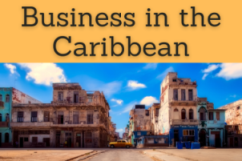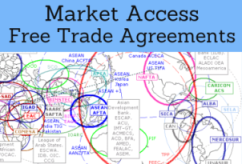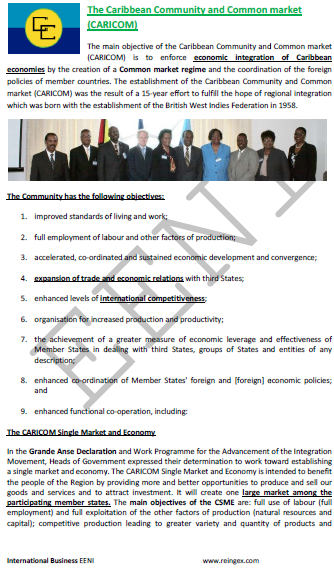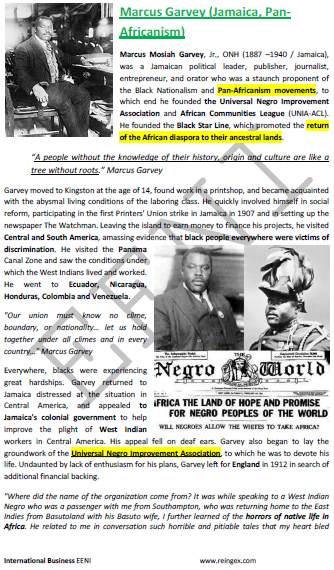Caribbean Economic Area, CARICOM, Jamaica

Caribbean Economic Integration (Western Civilization) Haiti Cuba
- Introduction to the Caribbean Economic Area of the Western Civilization (American economic area)
- The Caribbean region
- Economic Profile of the Caribbean Countries
- The African Diaspora in the Caribbean
- Economic Integration processes of the Caribbean Economic Area of the Western Civilization
- CARICOM
- Interactions of the Caribbean Economic Area with the other civilizations
- Economic Institutions and Trade Agreements related to the Caribbean Countries
The purposes of the subject “Caribbean Economic Area (Western Civilization)” are the following:
- To define the characteristics of the Caribbean Economic Area of the Western Civilization
- To analyze the influence of Christianity on the Caribbean Economic Area
- To know the economic profile of the Caribbean Countries
- To understand the economic integration process in the Caribbean Economic Area of the Western Civilization
- To know the economic relations with the other civilizations (Sinic, Hindu, Islamic, African, and Buddhist) and with the other areas of the Western Civilization
- To analyze the main Economic Organizations related to the Caribbean Economic Area

The Subject “Caribbean Economic Area (Western Civilization)” belongs to the following Online Programs taught by EENI Global Business School:
Doctorate: Ethics, Religions & Business, American Business, World Trade.
Masters: International Business, Foreign Trade, Religions & Business.
Course: Christianity & Business.

Why study “Christianity and Business”?.
Languages: 
 Civilization Caribeña
Civilization Caribeña  Civilization Caribeenne
Civilization Caribeenne  Civilização Latino-Americana.
Civilização Latino-Americana.
Credits of the Subject “Caribbean Economic Area”: 1 
Duration: 1 Week
Download the Syllabus of the Subject “Caribbean Economic Area” (PDF).

1- Introduction to the Caribbean Economic Area of the Western Civilization (American Economic Area).
- The Caribbean Region
- The Caribbean Countries: Antigua and Barbuda, the Bahamas, Barbados, Belize, Dominica, Grenada, Guyana, Haiti, Jamaica, Montserrat, Saint Lucia, Saint Kitts and Nevis, Saint Vincent and the Grenadines, Suriname, and Trinidad and Tobago
- The Case of Cuba, Puerto Rico and the Dominican Republic
- The Caribbean Economy
- The African Diaspora in the Caribbean
Note: Belize is included in the Caribbean Economic Area due to his membership to the CARICOM.
2- Economic Integration Processes of the Caribbean Economic Area of the Western Civilization

2.1- All the Caribbean Countries are members of the CARICOM.
- Antigua and Barbuda, Dominica, Grenada, Montserrat, Saint Vincent and the Grenadines, Saint Lucia and Saint Vincent and the Grenadines are members of the OECS. They share the Eastern Caribbean Dollar (the Eastern Caribbean Currency Union)
- The CARICOM Single Market and Economy (CSME)
- The Caribbean Development Bank
- The Eastern Caribbean Central Bank

2.1- All the Caribbean Countries are also members of the Association of Caribbean States (with Belize, Colombia, Costa Rica, Cuba, El Salvador, Guatemala, Honduras, Mexico, Nicaragua, Panama, the Dominican Republic, and Venezuela).
3- Interactions of the Caribbean Economic Area with the other civilizations.
Interactions of the Caribbean Countries with the European Economic Area.
- With the European
Economic Area:
- CARIFORUM-EU Agreement
- Haiti is a beneficiary of the GSP of the EU
- With the
Latin American
Economic Area:
- Colombia-CARICOM Agreement
- Caribbean Community-Costa Rica Agreement
- CARICOM-Dominican Republic Agreement
- Belize is a member of the Central American Integration System
- Suriname is a member of the Union of South American Nations (UNASUR)
- Antigua and Barbuda, Cuba, Dominica, Saint Vincent and the Grenadines and Saint Kitts and Nevis are members of the ALBA
- With the
North American economic area:
- With Canada: Caribbean-Canada Trade Agreement (CARIBCAN)
- With the U.S.:
- All the CARICOM Countries are beneficiaries of the Caribbean Basin Initiative
- Haiti is a beneficiary of the Hemispheric Opportunity through Partnership Encouragement (HOPE) Act
Guyana and Suriname are members of the Organization of Islamic Cooperation.
4- Other Economic Organizations related to the Caribbean Countries.
- CELAC
- OAS
- Antigua and Barbuda, the Bahamas, Barbados, Dominica, Grenada, Haiti, Jamaica, Saint Kitts and Nevis, Saint Vincent and the Grenadines, Saint Lucia, Suriname, and Trinidad and Tobago are members of the ECLAC
- Anguilla, the Netherlands Antilles, Aruba, Turks and Caicos, the British Virgin Islands, the Virgin Islands of the U.S., and Montserrat are associate members of the ECLAC
- The Bahamas, Barbados, Grenada, Haiti, Jamaica, Suriname, and Trinidad and Tobago are members of the Latin American and Caribbean Economic System (SELA)
- The Bahamas, Barbados, Haiti, Jamaica, and Suriname are members of the Inter-American Development Bank (IDB)
- WCO
- WB
- IMF
- WTO
- Commonwealth
- UN
Caribbean Economic Area of the Western Civilization.
Undoubtedly, the largest project of the Caribbean Economic Integration is the CARICOM (Caribbean Community), an integration agreement consists of fifteen Caribbean Countries representing 16 million people. The big project of the CARICOM is the Caribbean Single Market and Economy (CSME).
Furthermore, all the CARICOM Countries are members of the Association of Caribbean States.
- CARIFORUM has an important economic partnership agreement with the EU
- Colombia, Costa Rica, and the Dominican Republic has Trade Agreements with the CARICOM
- Both Canada (CARIBCAN Agreement) and the U.S. (Caribbean Basin Initiative) have implemented relevant Trade Agreements with the Caribbean Countries
- The Caribbean Countries do not have Trade Agreements with the other civilizations
The Caribbean Countries.
- The Caribbean Countries Population: 16 million people
- The most widely spoken languages are English, Spanish, French, and Creole
- Area: 462,355 km²
- The main religion of the Caribbean Countries is Christianity (Catholic and Protestant)
- All the Caribbean Countries are former colonies (England, France...)
- It should be noted the influence of the African Diaspora on the region

(c) EENI Global Business School (1995-2024)
We do not use cookies
Top of this page



